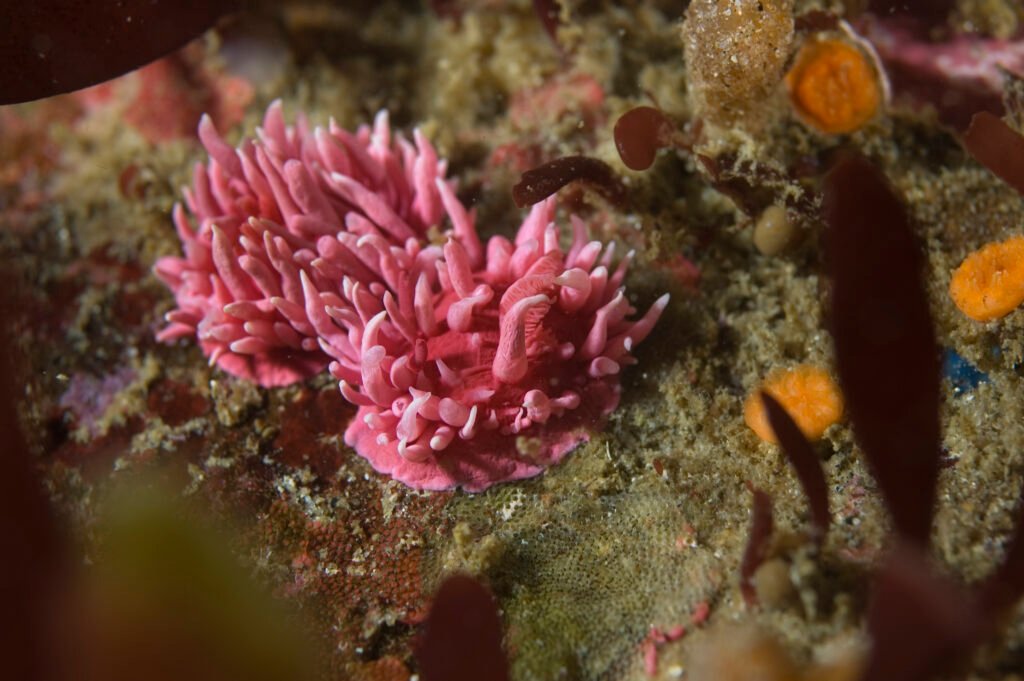Physical Description
The Sea Lemon, scientifically known as Anisodoris nobilis, showcases a ground color ranging from light yellow to deep orange-yellow. Its dorsum is adorned with numerous low, rounded tubercles. Irregular blotches of brown to black decorate the dorsum, but they do not extend up onto the tubercles. Rhinophores are yellow to yellow-orange, featuring 18-24 lamellae. Branchial plumes number 6, appearing tri- and quadripinnate, and are greyish-white, tipped with opaque white. Labial tentacles are digitiform. Typically, individuals measure around 35mm in length, but they may exceed 200mm.
Habitat and Geographical Range
Anisodoris nobilis inhabits the eastern Pacific coast, where it can be found in suitable marine environments.
What They Eat and How They Breed
These creatures likely feed on a variety of marine organisms, though specific dietary preferences are not extensively documented. For reproduction, Sea Lemons likely follow patterns typical of dorid nudibranchs, laying eggs in gelatinous masses.
Similar Nudibranchs
There are several species of yellow dorid nudibranchs found in Monterey. The sea lemon is most easily identified by its white gills and dark spots between the tubercles. For species often mistaken for the sea lemon, check out these links.
Mulliner’s Dorid
Explore Mulliner’s Dorid, a large nudibranch with distinctive yellow features and irregular brown blotches on its mantle, found along the eastern Pacific coast.
White-Spotted Dorid
Discover the fascinating characteristics of the White-spotted Dorid, a marine species found along the eastern Pacific coast, boasting distinctive physical traits and subtle color variations.
Monterey Dorid
Discover the striking Monterey Doris, a large yellow dorid species with dark pigmented tubercles, commonly found along the rocky shores of the eastern Pacific coast.















